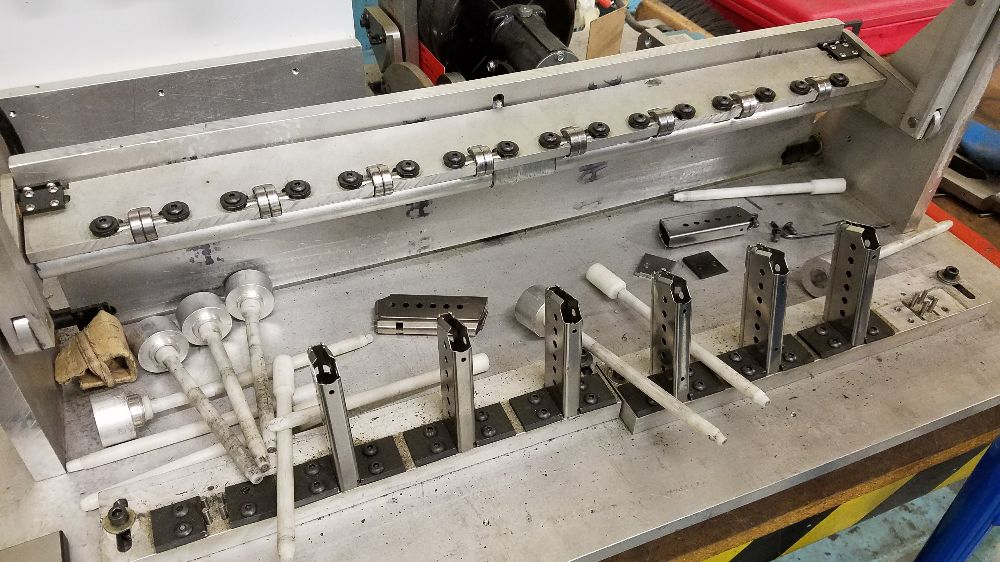
Conversations about “the industry,” whatever the industry, tend to be spoken in shorthand and generalizations. But acronyms and broad presumptions aside, what’s good for one manufacturer isn’t necessarily good for another any more than all men’s shoes should only be made in size 9 narrow or trousers in 34-30.
One size does not fit all.
That was reinforced last weekend during the Gun Owners of America gathering in Knoxville. There, on the former site of what was not one of the great world’s fairs, but has evolved into an awesome event space, the GOA’s innovation roundtable reminded me we’re often guilty of business tunnel vision. In business, as in an emergency, tunnel vision can result in wrong assumptions and decidedly negative outcomes.
The manufacturers who were there bristled – slightly – at the suggestion that the industry lacks innovation.
They defended their frustration by clarifying the distinction between innovation in manufacturing and the incessant incorrect and over-use of the term “innovation” when marketing products. The two applications of the term “innovation” create a baked-in feeling of disappointment for consumers.
As they explained, grippier grips and cooler paint jobs, are not innovations to anyone other than marketing copywriters. Adam Ruonala of Canik Firearms raised an interesting point regarding innovation.
“Innovation,” he explained, “sometimes comes in manufacturing by two unlikely actions; imitation and improvement.” Canik, he related, introduced some pistols with triggers he described as “terrible.” The company then decided they were going from “worst to first” with their factory triggers.
Today, their pistols are known for having excellent factory triggers. How did they accomplish that?

Through buying their competitors’ products, looking at their triggers, which really were better, he admitted. Canik’s engineers then looked at the engineering of the component parts of each competitor’s gun. Using their engineering abilities, they then designed a new trigger. It was based on the solid work of others and Canik’s incorporation of that work into a new and decidedly better redesigned trigger.
All companies look at their competition for good ideas and areas of potential improvement. That’s not a groundbreaking revelation, but it helps demonstrate how innovative thinking can also incorporate inclusive ideas.

Another point agreed to by almost everyone on the panel was the fact that even in the best of times, and especially in slower ones, research and development didn’t get what it deserved as far as funding and support.
They also brought home a point that consumers and their marketing departments often miss. Not all innovation happens in the product. Innovation can impact how efficiently the product can be made, how quickly it can distributed and how affordably it can be priced to consumers. All of those are pluses. Few of them are ever acknowledged.
The audience began nodding in agreement when the panel made the point that guns made today, compared to the same gun manufactured as recently as five years ago, are far superior.
Again, not all innovations are obvious. But their incorporation, even if when intangible, is inarguably beneficial to the consumer.
The gun business, they all agreed, is a delicate balancing between demand and price. Creating products that are simple to manufacture, afford good business margins and are easy to support sounds like a sure success. But if no one bothered to see if the consumer wants them, they’re essentially worthless. No one, they agreed, wants to produce the last great product that bombed.

Firearms is also an industry with some unique challenges. And these are problems that can’t be overcome by innovative manufacturing, efficient distribution, or by sheer will.
The first of two major challenges unique to the industry was described succinctly by David Borges, Sr. of Matador Arms; funding. All gun companies, he reminded everyone, including the biggest makers, have challenges when it comes to financing. Access to the capitol markets isn’t easy for companies in a politically disfavored industry.
The challenge of finance prevents many small companies like Matador from bringing new products to market. “I have five products sitting on the shelf waiting to be introduced,” he explained, “but I’m not able to finance them. Traditional banking is tough for gun companies. It’s really tough for smaller ones like Matador.”

Jamin McCallum, CEO of Palmetto State Armory, agreed, but went on to describe what he felt was the biggest challenge facing the industry and its customers: bad laws. “Unconstitutional laws,” McCallum said, “are the biggest threat to each of us, whether we’re manufacturers or consumers. We’re forced to spend time trying to interpret and overcome laws that are infringements of our constitutional rights.”
“The best way to drive innovation in the industry,” he said, “is to work in the courts to strike down these unconstitutional laws.” It’s hard to argue that one.
That hard truth explains why the industry supports a broad range of groups that exist for that exact purpose, including Gun Owners of America.
As always, we’ll keep you posted.


“The manufacturers who were there bristled – slightly – at the suggestion that the industry lacks innovation.”
It does lack ‘innovation’ in many areas. Things that could have already been in the gun market aren’t because manufacturers are more into ‘bling’ and ‘wash rinse repeat, but change a dimple or color here and there’. For cripes sake’s, ‘how many FDE color shades can ya sell on the same hand guard series that wasn’t that great to begin with’ seems to just about sum it up.
For example; For 10 years the technology has been available to produce an RDS that doesn’t need an enclosure as it projects the dot/reticle above the pistol/rifle and its just there in the air. Imagine not having to specifically order a holster that’s cut for an RDS on the pistol, imagine a rifle RDS optic that ya don’t need to be concerned about getting the glass dirty or broken, imagine an RDS where your astigmatism didn’t matter and the dot was crisp and clear for anyone, imagine that bight light washout didn’t happen to the dot. One manufacturer had an opportunity to produce such a sight but turned down a chance to do so in favor of marketing eventually another rendition of their older M21 with their newest the M22 in an enclosure that follows the same ‘gotta have a big honkin hunk of plastic/alumimum material on top of your gun’ trope so many in the RDS optics market follow. And speaking of RDS optics, someone needs to explain to these manufacturers what the word ‘micro’ means because apparently to some of them it means ‘undefined big’.
WRT “an RDS that doesn’t need an enclosure,” citation please?
I said the technology for such an RDS has been available, not an actual RDS. Actually, the method and technology was created in 2014 at the Los Alamos National Laboratory for projecting a laser dot suspended in 3D space. The broad term applied for the method is ‘volumetric images’, the method is also called ‘Photophoretic optical trapping’
Its a physics thing, basically a laser beam traps a ‘particle’ (or ‘particles’) in the air (and despite the air looking ‘clear’ there are always ‘particles’ in the air that can be trapped. No, it does not need to be a dust particle even though no matter how much you clean the air there are always some microscopic dust particles around any object even in outer space. But anyway, by trapping this ‘particle with the laser beam the particle movement can be manipulated and that movement can be used to produce a pattern (e.g. for our purposes a dot or reticle) and the resulting ‘volumetric image’ (in our case – reticle) appears suspended in air and occupies 3D space basically like, for example, your hand does.
We’ve played with this idea in the lab and actually created a sight that we put on a Glock, it was a simple cross hair type reticle. Its a little ‘experiment’ clunky size wise as its an experimental thing anyway – but it works.
Here is a video that explains the basic idea (the video was done 6 years ago – but the technology to do it has been available to the commercial market for the last 10 years in different ‘undeveloped for purpose’ forms. But it is in use…Ya got a CAT scan in the hospital with a system made in the last 10 years, then this method is in that machine and being used – its just presented more traditionally with screens and on film or video as the images you see in 2D space). Anyway, the video > https://www.youtube.com/watch?v=YRZMdQOMPNQ
And for example > https://phys.org/news/2021-05-hologram-experts-real-life-images-air.html
Just hangs there in the air? No enclosure to block direct sunlight and allow the red/green dot to be actually seen by your eye during daytime?
Suspicious Cat (shows photo of cat squinting and giving a side-eye look of doubt) remains suspicious…
I replied to your post, unfortunately it went to moderation (links I guess) so it will hopefully show up when someone at SNW decides to look.
never mind, the post in moderation finally appeared. Its like having a discussion after the discussion is over and everyone left.
Well, I came back to read it. Very interesting, and thanks for the links.